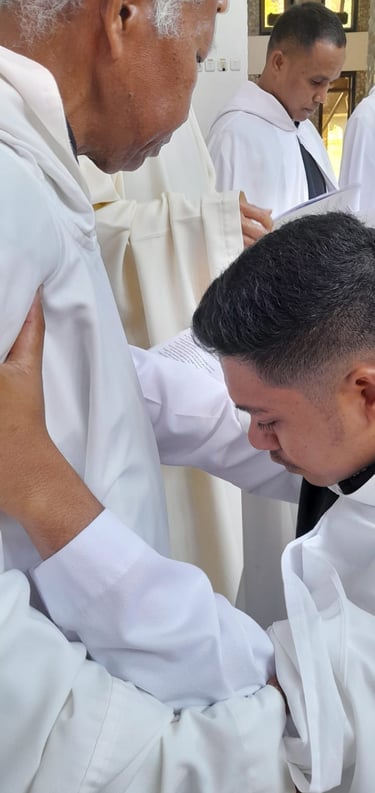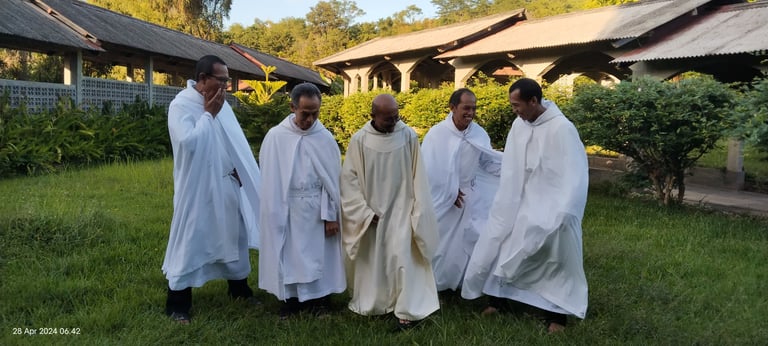Cenobitic Monasticism
Starting from Saint Benedict
Learning from the Rule of the Master (Regula Magistri), as well as other rules from Cassian, Pachomius, Augustine and Basil, Saint Benedict (480-547) compiled the rules for cenobitic life at the monastery of Monte Cassino in Italy, about 130 km southeast of Rome. He was confirmed as the Father of Western Monasticism because his rules were followed almost throughout Europe.
At the beginning of his vocation, Benedict chose to live as a hermit for 3 years in a cave in the Subiaco hills under the guidance of the Romanus monk, as an expression of his protest against the moral decline he witnessed when he was sent to study in Rome by his parents. His obedience to the Word of God and spiritual guidance resulted in wisdom in overcoming various temptations in living the ascetic life. St. Gregory the Great, who wrote his biography, also described the various virtues he acquired, such as discerning spirits, casting out evil spirits, and the various miracles he performed.
The Life of a Monastic
From personal experience, Benedict saw that life as a hermit was not easy because of the many temptations, and without a qualified guide, a monk could go astray. The hermit was intended for ascetics who were capable and had been tested for their virtues, discretion and love, especially after living in a community. There are two types of ascetic life that he does not recommend, such as sarabait who live alone, in pairs or in threes without following certain monastic rules. The rules and measures of the sanctity of life are determined by themselves. The second is gyrovague who are too free, like to wander and visit monasteries.
Cenobitic life was more recommended by Benedict and at the request of many monks he finally joined and led the ascetic monks in the community.
In the cenobitic monastery, the dangers of demonic temptation and pride are overcome by the guidance of a holy and experienced leader called “Abbot”. To guarantee the safety of his soul, a monk needs to have a grip, namely: 1) rules, and 2) staying in one place. These two elements reflect the values of humility, obedience and self-concentration to do divine work (daily worship) and manual labor. In later developments, the cenobitic monks embraced the vow of faithfulness to the monastic way of life, obedience and stability (living in one monastery) which was chosen for life, not just for a while. This is the main characteristic of the monastic monasteries that follow the Rule of Saint Benedict.
Next...




Pertapaan Trappist Lamanabi
Desa Lamanabi RT004/RW002, Kecamatan Tanjung Bunga, Kabupaten Flores Timur 86251, Nusa Tenggara Timur
© 2024. All rights reserved.
Bandara terdekat: GEWAYANTANA (LKA) - Larantuka
